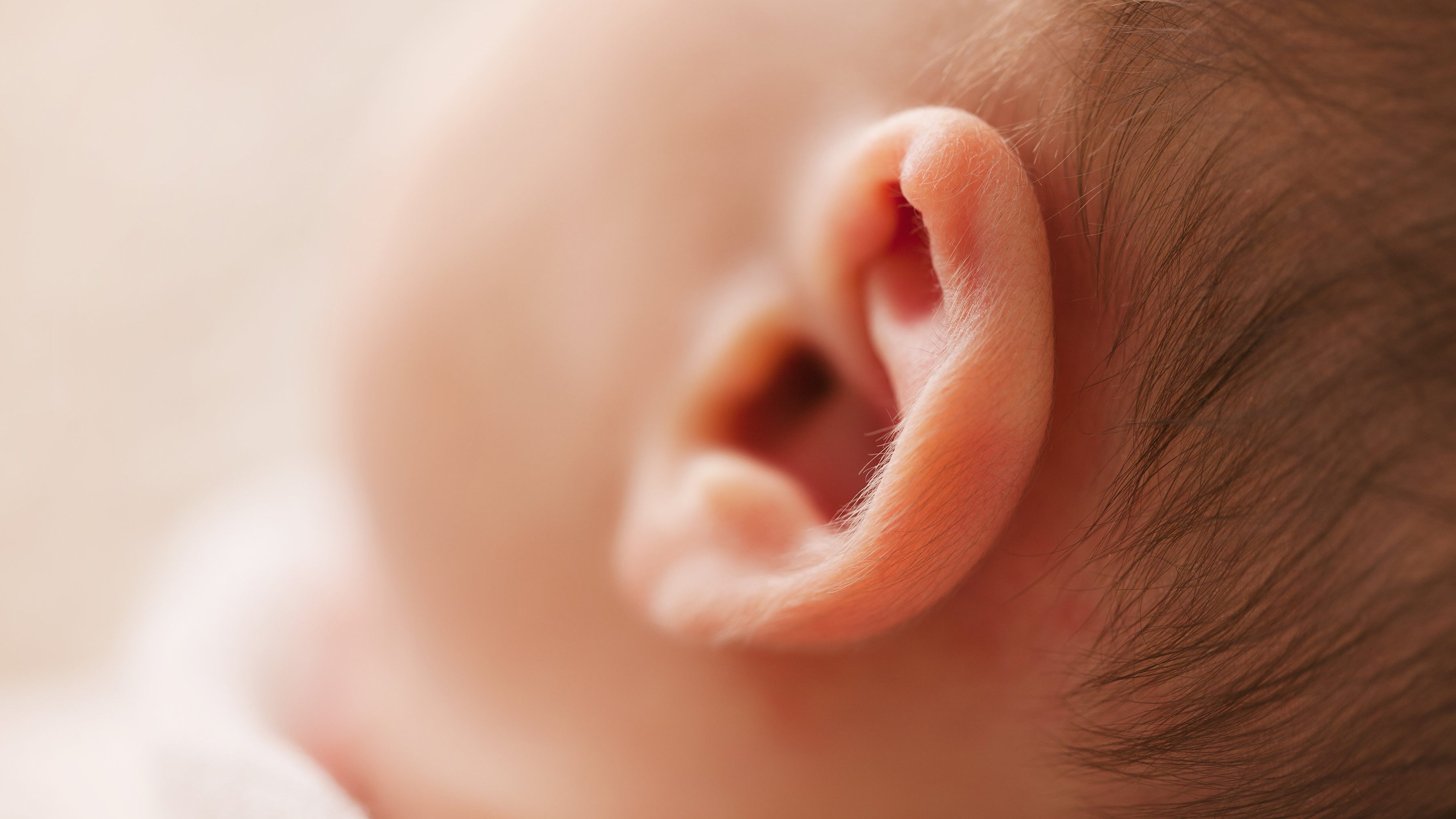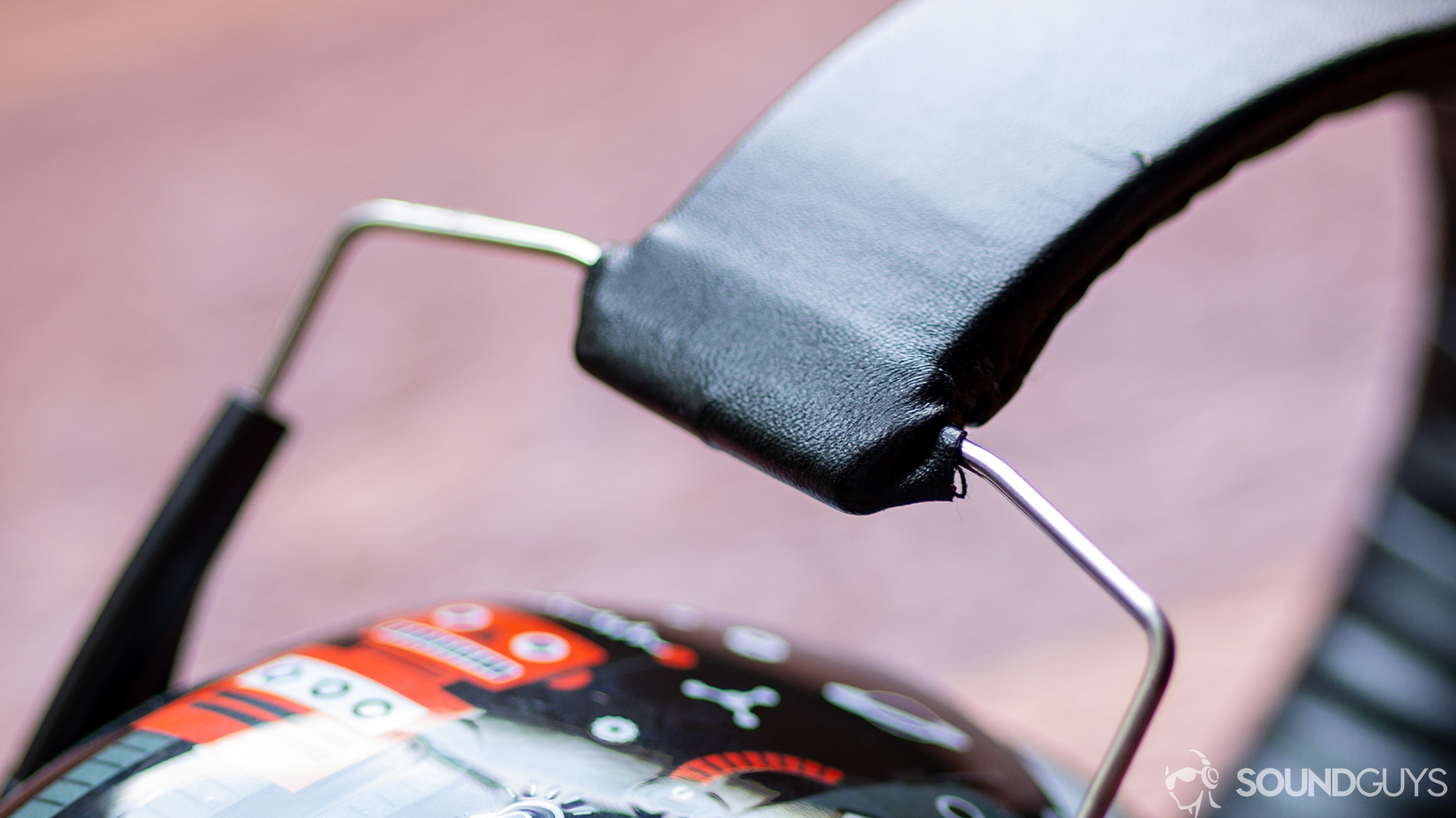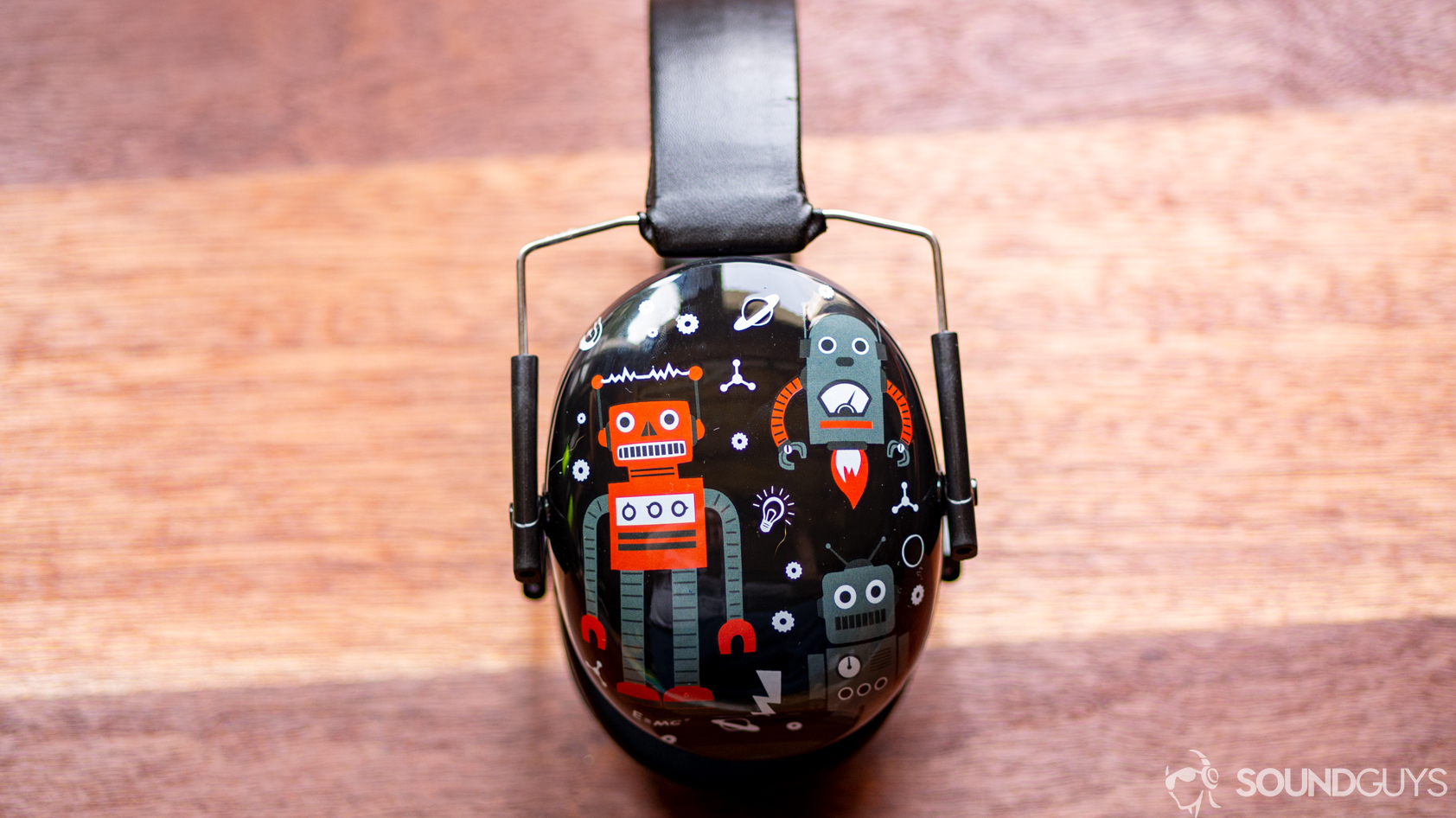All products featured are independently chosen by us. However, SoundGuys may receive a commission on orders placed through its retail links. See our ethics statement.
Best hearing protection for kids
March 8, 2024
New parents are bombarded from all sides about what to do, what to buy, how to act, and even how to talk around their young family members. But one of the more critical things that new parents often overlook is hearing protection for kids.
As a member of the legion of no sleep, I can help here. I bought all the best models the internet had to offer and used our test head to see how well each hearing protector gets rid of unwanted noise. Decibel ratings are fraught with problems, so why not let us give you the whole picture objectively?
Related
- Aside from hearing protection, you may be interested in learning more about why kids' headphones don't always have volume limits, and check out our recommendations for the best headphones for kids.
- It's worth noting that the Centers for Disease Control and Prevention considers sounds at or below 70 dB to be safe. Yet, that doesn't stop the majority of headphones from exceeding 100 dB out of the box. However, dB isn't the only factor that matters regarding hearing protection, which you can learn more about below.
Why do you need hearing protection for your child?
Children don’t hear the world around them like you or I do. Not only are they far more sensitive to loud sounds, but they presumably don’t have noise-induced hearing loss yet. As such, they can hear much higher-pitched sounds than adults or even teens can. What we might not notice could be extremely painful to them, so good hearing protection for events, live music, and travel is a must if you want to bring your little buddy with you. Remember, headphones are not a replacement for hearing protection; they are often inadequate.
Additionally, because their heads aren’t adult-sized yet, regular old hearing protection or active noise canceling headphones aren’t going to cut it.

Hearing loss can start far earlier than you might think, so it’s always important to make sure that fireworks, loud music, or transportation won’t lead to any avoidable impairment. That’s why you should use hearing protection when you know you’ll be in an environment with lots of noise or really loud sounds.
As a general rule of thumb, your children should still be able to hear what you are saying while they are using earbuds or headphones when you are within arm’s reach. If they can’t hear you, the volume is too high. Generally, we recommend setting volume limits to max out at 60% on their devices.
Should you trust the dB rating?
If you do your research online, you’ll invariably see that the hearing protectors have a rating that says something like “25dB” or “reduces noise by 99 %.” While some may be technically true, depending on how you look at it, these figures don’t always communicate a complete picture of what you’re looking for.
The noise reduction rating (NRR) is used to communicate how well a product attenuates noise using a set procedure to produce a number, followed by “dB(A).” Though that can’t tell you what individual sounds will be blocked out, it does a fairly nice job of giving you a broad context around how well something gets rid of outside noise. In a safety context, this rating is used to calculate acceptable guidelines for noisy work environments and more.
For the vast majority of cases, a product with a larger number for a noise reduction rating is better than a smaller number. For example, a headset with an NRR of 35dB(A) is much better than foam earplugs rated at 18dB(A). However, none of these ratings mean anything if these products don’t fit your child’s head properly.
This is where we have some differing opinions on which protectors are better than others, as even highly rated items can be a poor buy due to fit issues. Many of the test fixtures used to determine how well something blocks out noise use flat plates surrounding an artificial ear, and no human’s head is shaped like that. Consequently, you’ll almost always have experiences that differ from the number on the box unless you find something that fits well.
Why is fit important?
For hearing protectors, the single most important quality they have is that they fit properly. If they don’t, they’ll let in a lot of noise where they don’t make contact with your head or ear canal. We go over this more in detail in other articles, but the headline here is that how a product fits is by far the most important factor in choosing something to block outside noise.

Consequently, we recommend buying a few different models and sticking with the one that fits the best (be sure to read the return policy of whatever store you choose). Every model listed here will perform to a point where we’re comfortable recommending it, so don’t worry too much if the best hearing protection doesn’t fit your child—whatever fits the best is the best option for you. We’ll give you enough information to make sure that they get much better hearing protection than a set of kids’ headphones, at the very least.
The best all-around hearing protection is the Zohan 030
Sure, they’re made of cheap plastic and are absolutely huge. However, the Zohan hearing protectors are not only a close 2nd-best on noise isolation (Baby Banz are for 0-2-year-olds only), but they also have a band that can accommodate heads from 5 months to adult use. That’s impressive, especially given its super deep ear pads and intended market. Consequently, these were by far the most comfortable option among our candidates.
If it seems like I’m overstating the value of comfort, consider this: hearing protection can’t work if it doesn’t fit or your kids take it off. It’s far better to have something that you can trust they’ll wear over something that works the best but hurts the most. Get the Zohan 030 (and no, I’m not going to reference that terrible movie).
The PuroQuiet is the best ANC headset
Of course, hearing protection doesn’t have the advantage of being able to entertain your child, so for long flights or commutes, your kids will want proper headphones. Now, headphones are not hearing protection, and they can’t replace a dedicated set of protectors. However, ANC headphones are really good at handling long droning sounds like airplane engines or subway noise.
Unfortunately, there aren’t many ANC headphones out there that can reliably fit younger ears, so your options are few and far between. That’s why we recommend the Puro Sound Labs PuroQuiet: it performs decently enough at a price that won’t empty your bank account. Plus, it’ll get more usage over the years as your children grow up.
What about the PuroPro ANC?
Earlier in 2022, Puro Sound Labs also released a more mature volume-limiting headset that sheds the kid-friendly aesthetic called the PuroPro. While some may find it an attractive option for pickier kids, it’s possible that these headphones are too big for your little ones. This headset offers many of the same features as the PuroQuiet but with the option to boost the volume limiter in some situations. Because of this capability, it’s possible to forget to change it back to 85dB, and that’s why we advise caution here.
Notable Mentions

- The Dr. Meter EM100 ($39.99 for two at Amazon): This is one of the best options for younger ears. However, you may not want to buy them because they put a lot of pressure on your head.
- The Snug Kids Earmuffs ($21.99 at Amazon): These are slightly behind the rest of the pack in terms of performance, but they look the coolest by far. I mean, come on, robots are awesome! But there are many other designs, too, if you prefer something else.
- Alpine Muffy Noise Cancelling Headphones for Kids ($29.99 at Amazon): These headphones are specifically designed to assist children with autism or sensory issues. The noise reduction can help reduce sensory overload and other external triggers. They are made in the Netherlands and have been tested to reach an acoustic attenuation from 21 to 28 dB.
- Muffy for Kids Baby Earmuffs ($39.99 at Amazon) are great for infants, but they don’t have a lot of room for growth, and the band can get tight on larger heads. If your child is under five, these hearing protectors make a decent choice. However, if your child is older than five, they might not fit as they should.
- The PROHEAR 032 ($15.99 at Amazon): These headphones have a lot of flexibility when it comes to finding the right fit for your child, with an adjustable headband and rotating ear cups. They also feature active noise cancelation and Bluetooth 5.0 connectivity.
Avoid these models!
There are a lot of good hearing protectors on the market, but there are a couple of items that just aren’t as useful as the rest.
The Etymotic Research ETY-Plugs are very good for adults, but they might not be a good fit for kids. In-ears are notorious for putting a lot of pressure on the inside of ear canals, which isn’t something that’s good for kids—especially when you consider that their ear canals are smaller. Because of the Christmas-tree-type ear tip, they don’t reach their full effectiveness unless you can insert the entire tip into your ear. For kids, that’s not always possible.
Mack’s soft silicone earplugs are a time-tested solution to keeping water out of your child’s ears, but for noise, they’re not as good. Try not to use these for both.
Baby Banz Infant Hearing Protection is a decent set of hearing protectors, but not only do they cost more than the competition—they’re smaller than other models as well. It might not be a big issue at first, but you’ll soon be buying something to fit an ever-larger head.
Best hearing protection for kids: Additional test data
On paper, the models listed here all have attested noise reduction ratings listed, though again, that assumes the products fit the user. Below is a rundown of the efficacy of each.
| Product | NRR (dB(A)) |
|---|---|
Baby Banz Earmuffs | 31 |
PuroCalm Earmuffs | 27 |
Dr. Meter Ear Muffs | 27 |
ProCase Kids Noise Canceling Safety Ear Muffs | 27 |
BlueFire Kids Ear Protection Safety Earmuffs | 27 |
Everyday Educate Ear Muffs for Kids | 27 |
GREEN DEVIL Kids Hearing Protection Ear muffs | 27 |
ProCase Kids Ear Protection Safety Ear Muffs | 25 |
Alpine Muffy Noise Canceling Headphones for Kids | 25 |
Snug Kids Ear Protection | 25 |
PROHEAR 032 Kids Ear Protection | 25 |
Alpine Pluggies Kids Ear Plugs for Small Ear Canals | 25 |
Champs Earmuff Noise Protection Reduction Headphones | 25 |
Walker's Youth Children’s Low Profile Padded Headband Adjustable Folding Noise-Reducing Hearing Protection | 23 |
Alpine Muffy Baby Ear Protection | 23 |
Zohan EM030 | 22 |
Mack's Putty Earplugs | 20 |
3M Kids Hearing Protection | 20 |
Etymotic Ety Plugs | 20 |
Dison Kids Ear Protection | 20 |
If you’d like to see all our isolation data, here it is! You want that line to be as high as possible, as far to the left as possible. Any products not shown here weren’t tested in our labs, so you may have to check back later for a more complete dataset.
If you have a set of child hearing protection, you like and use, be sure to submit it to our FAQ submission tool so we can take a look! More and more products are coming out every day, and some of the models tested above may get discontinued. It happens. In that light, be sure to poke around on your own and look for models that offer a high dB(A) noise reduction rating and the features you want.
FAQs
To protect your child’s ears at a concert, consider getting them hearing protection such as earmuffs or earplugs. Remember, headphones are not a replacement for hearing protection. Always ensure the hearing protection fits well on your child’s head, as an improper fit can let in excessive noise.
Kids should start wearing ear protection as early as infancy if they’re in environments with high levels of noise, such as concerts, sports events, or fireworks displays. Some earmuffs are specifically designed for infants, toddlers, and older children.
Yes, a 4-year-old can benefit from ear defenders, especially in noisy environments. Kids’ ears are more sensitive to loud sounds than adults, and exposure to loud noise can lead to hearing damage. Ensure the ear defenders fit properly and securely for maximum effectiveness.
You can protect your child’s hearing by limiting their exposure to loud noises and using suitable hearing protection such as earmuffs or earplugs when in noisy environments. Encourage safe listening habits, such as keeping the volume of electronic devices at safe levels (below 60%). Regular hearing checks can also help detect any potential hearing issues early.
Red flags for hearing loss in children include not reacting to loud sounds, not turning toward a sound source, not responding to their name, unclear speech, frequently asking for repetition or saying “what?,” and listening to the TV or music at high volumes.
Yes, kids can wear earplugs, but it’s important to ensure they fit properly. Ill-fitted earplugs can be ineffective or uncomfortable. However, earmuffs are often a safer and more comfortable choice for children, especially for younger ones, as they don’t pose a choking hazard.